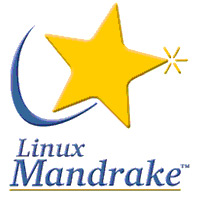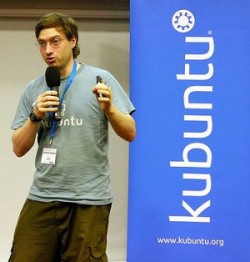FOSS Week in Review
It’s been a busy week for those in the FOSS realm — from sea-to-shining-sea, and even down South — with the Red Hat Summit going on in Boston, with Open Source Bridge in Portland, Oregon, and with preparations being finalized for the upcoming Texas Linux Fest in two months, among other things.
Let’s take these one at a time, shall we?
 Red Hat, Samsung Team Up: While there has been a lot of oooh-ing and ahhh-ing over what’s been coming out of the Red Hat Summit in Boston this week, probably the most intriguing news to come out of the proceedings is that Red Hat and Samsung Electronics America “announced a strategic alliance to deliver the next generation of mobile solutions for the enterprise,” according to Red Hat’s PR department.
Red Hat, Samsung Team Up: While there has been a lot of oooh-ing and ahhh-ing over what’s been coming out of the Red Hat Summit in Boston this week, probably the most intriguing news to come out of the proceedings is that Red Hat and Samsung Electronics America “announced a strategic alliance to deliver the next generation of mobile solutions for the enterprise,” according to Red Hat’s PR department.



 FOSS Force has learned that Mageia will soon officially announce the release of the stable version of Mageia 5, most likely later today. According to a source within the organization, the ISO images were pushed to the distro’s main mirror at about 7 P.M. EST yesterday. According to our source, the developers are now just waiting for the images to be available on all mirrors before making the official announcement.
FOSS Force has learned that Mageia will soon officially announce the release of the stable version of Mageia 5, most likely later today. According to a source within the organization, the ISO images were pushed to the distro’s main mirror at about 7 P.M. EST yesterday. According to our source, the developers are now just waiting for the images to be available on all mirrors before making the official announcement.



 I’ve spent a good deal of time, as well, kicking this around with my partner-in-ink Larry Cafiero. And some of the things I’ve taken away were not gotten face-to-face: Folks like Steven Vaughan-Nichols and Matt Hartley have discussed it through their preferred media in one way or another.
I’ve spent a good deal of time, as well, kicking this around with my partner-in-ink Larry Cafiero. And some of the things I’ve taken away were not gotten face-to-face: Folks like Steven Vaughan-Nichols and Matt Hartley have discussed it through their preferred media in one way or another.

 Mandriva S.A., the French company behind Mandriva, the distribution that long time Linux users will remember as Mandrake, died this week at the age of sixteen. The announcement came in the form of a
Mandriva S.A., the French company behind Mandriva, the distribution that long time Linux users will remember as Mandrake, died this week at the age of sixteen. The announcement came in the form of a 


 Since the introduction of Fedora.next — the umbrella program for the roadmap for the distro going forward — the distro comes in three basic flavors: Workstation, Server and Cloud. Workstation is the desktop/laptop version — and workstation version for businesses. Cloud and Server are pretty self-explanatory.
Since the introduction of Fedora.next — the umbrella program for the roadmap for the distro going forward — the distro comes in three basic flavors: Workstation, Server and Cloud. Workstation is the desktop/laptop version — and workstation version for businesses. Cloud and Server are pretty self-explanatory.